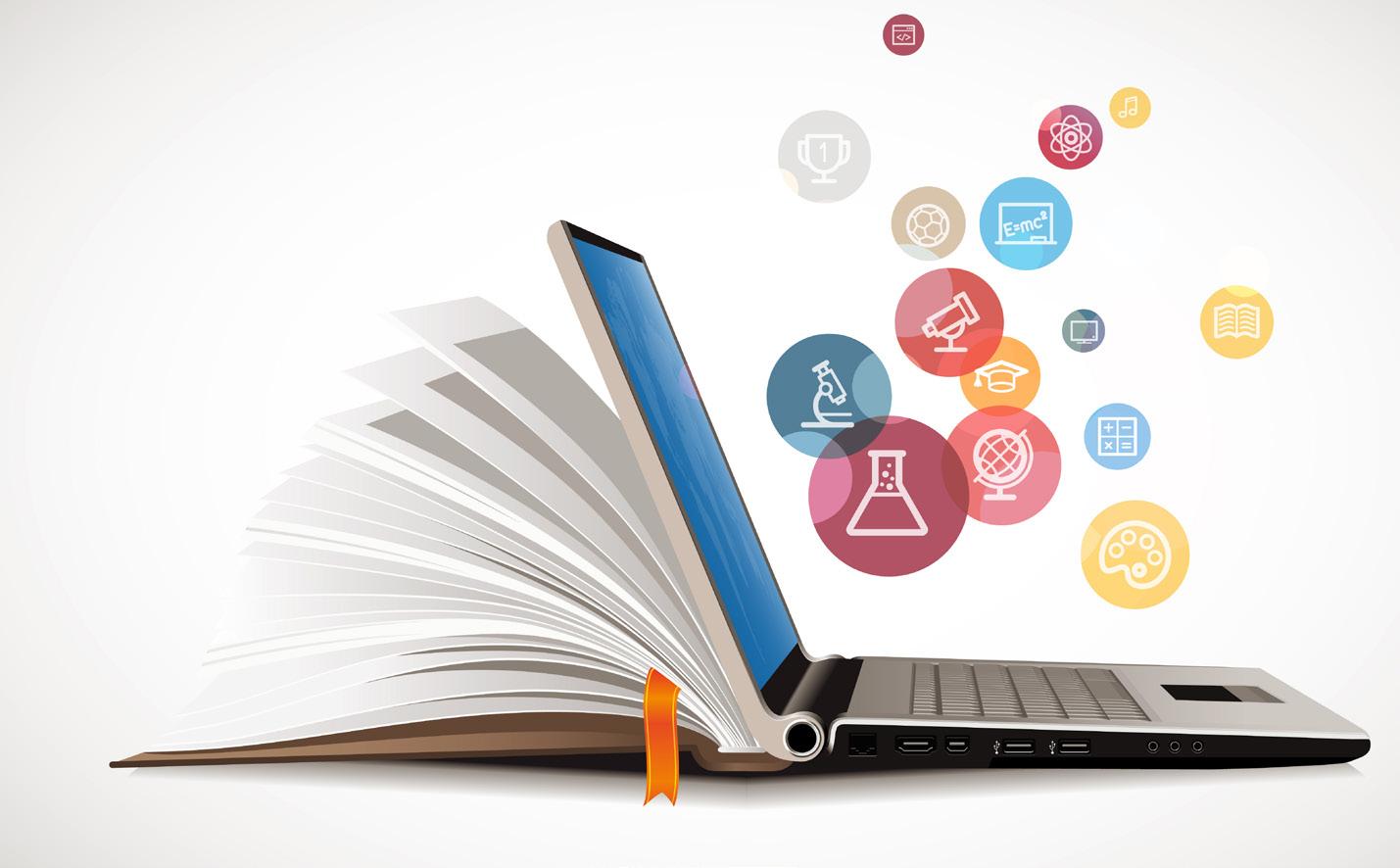
8 minute read
HR and the Future of Work. You've got this!
Business futurist, Gihan Perera, takes an in-depth look at the emerging trends facing many organisations today and what we, as HR professionals, can do about them.
When Steven Hankin of McKinsey & Company consulting firm, coined the phrase “the war for talent” in 1997, the USA was enjoying strong economic growth, and the best employees could take their pick of places to work.
Today, we have a new war for talent, as organisations face a faster, more volatile and less certain future. Technology, globalisation, and generational shifts are changing the very nature of work, and the power has shifted again to the best employees – as the evidence shows:
• finding high-quality talent is the top challenge for HR leaders in 2019 (XpertHR)
• nearly half (45 per cent) of employers are experiencing difficulty filling open positions (Manpower)
• eighty-three per cent of leaders ranked ‘attracting skilled resources’ as a top-three concern (Deloitte).
In this environment, the role of HR has never been as important. In high-performance organisations, the HR function plays a vital role in understanding the future of work and advising the rest of the organisation.
Here are four main trends facing many organisations now and how HR professionals can take a proactive role in facilitating change.
Flexible work
For the past 200 years, the office has been the workplace of choice for knowledge workers. Everybody in a team came to the same office at the same time to work the same hours every day. It was not just more comfortable, it was essential for getting work done. The office was where the files were stored, the secretarial staff were available, the meetings were held and so on. Technology has removed many of those restrictions, and employees everywhere want to choose when, where and how they work.
• Seventy-five per cent of UK employees want more workplace flexibility (Powwownow). • Forty-seven per cent of Australians would accept a pay cut in return for being able to work from home sometimes (Robert Half).
• Fifty-three per cent of employees already work away from the office for more than half their week (International Workplace Group).
In survey after survey, flexible work consistently tops the list of employee perks – to the point where it’s no longer considered a ‘perk’ but a basic expectation of the workplace. This is even stronger with younger people: 50 per cent of Generation Y (millennials) and 44 per cent of Generation Z consider workplace flexibility “very important” in choosing where to work (2018 Deloitte Millennial Survey).
This shift has important implications for HR professionals who have to manage the change across the entire organisation, including recruitment, employment contracts, technology infrastructure, occupational health and safety, fairness and equal access, and performance management, to name a few.
HR will also shoulder the responsibility to anticipate and prevent potential problems before they occur. As just one example, although many Australians want more flexible work (as noted above), Mercer reports that 36 per cent of Australian workers worry that flexible work affects their promotion opportunities. Whether or not this is the case (and it undoubtedly is in some cases), the perception of bias creates a potential risk for the organisation, especially if HR hasn’t anticipated this risk.
Brand resonance
In its latest Global Talent Trends Survey, Mercer identified four main trends from leading organisations in 2019. One of them is building brand resonance. The best organisations not only create a marketing brand to attract customers but also a Talent Value Proposition (TVP) to attract the best employees. This is a new idea for many organisations, but with increasing transparency through sites like Glassdoor and social media in general, it’s becoming a vital part of the HR function. It means HR is not only responsible for the employee experience internally but also for the way that is expressed externally through the TVP.

For example, according to the Center for Generational Kinetics, Generation Z’s platform of choice for learning about a company is not Glassdoor or LinkedIn, but YouTube! Many HR professionals would never have considered YouTube as a recruitment tool, let alone understood how to leverage it as part of their talent strategy.

This example also highlights the complexity of this new role. Just because those in Generation Z resonate with YouTube, it clearly isn’t a priority for other generations. And this goes beyond generations: How do you connect with women, minorities, contingent workers and so on? Mercer reported that more than two-thirds of high-growth organisations customise their TVP for various groups – significantly higher than the proportion of modest-growth companies that do the same.
Active learning
Just as the go-to workplace of the past was the office, the go-to learning and development (L&D) skills development tool of the past was the training room, and for the same reason: efficiency. The traditional training course still has its place, but technology and distributed teams mean other options are now also gaining prominence.
E-learning is growing in popularity, with ATD and the Institute for Corporate Productivity reporting high-performance organisations are investing heavily in e-learning resources. By their estimates, half of these organisations will have most of their learning assets available as e-learning by 2022.
But active learning in the workplace – far more critical in our fast-changing world than ever before – goes beyond digital strategies.
Mentoring programmes are becoming more popular, and with proven results, not only in accelerating the experience curve but in attracting and keeping talent. For example, Sun Microsystems reported these positive results from its mentoring programme:
• retention rates were significantly higher for mentorees (72 per cent) and for mentors (69 per cent) than for employees who didn’t participate
• mentorees were five times more likely to earn more than their peers
• mentorees were promoted five times more than those not in the programme, and mentors six times more.
Another small but growing area of development is reverse mentoring, which turns the traditional mentoring idea on its head. Instead of the more experienced person being the mentor, the more junior person takes on that role – sharing their unique perspectives, experience and expertise.
The Hartford, a financial services group in the USA, leveraged the power of reverse mentoring to reach a new kind of customer, understand the modern workforce and improve its bottom line.

Across the organisation, 50 mentoring pairsparticipated in the programme, and they achieved outstanding results:
• ninety-seven per cent of the mentorees (the senior people, remember) rated it extremely effective for their personal development
• just as importantly, 11 of the 12 mentors (the more junior people) in the project’s first wave were promoted within a year
• the business implemented new practices that saved time and money, increased social media engagement and boosted internal knowledge within teams.
Unfortunately, many organisations are slow to invest in new L&D initiatives, and it’s already hurting their talent attraction and retention. For example, almost half of Generation Z learners prefer an entirely self-directed and independent approach to learning. Still, only 20 per cent of L&D and HR leaders reported that they plan to offer this level of self-direction (LinkedIn Learning).

Artificial intelligence Of course, no conversation about the future of work is complete without touching on AI.
Every indicator shows the integration of AI in the workplace is growing and growing rapidly:
• eighty-five per cent of executives believe AI can help them gain a competitive advantage (MIT Sloan Management Review)
• employer demand for AI-related roles has more than doubled over the past three years (Indeed)
• eighty-two per cent of leaders expect their employees and machines to work as “integrated teams” within the next few years (Dell).
AI is already spreading through workplaces, for example:
• AI chatbots answer customer service queries
• AI assistants schedule meetings and appointments
• AI lawyers read and interpret complex contracts
• AI analyses emotions and sentiments in social media posts
• AI coaches listen to sales calls to help salespeople improve their skills.
Employee reaction to AI is mixed. According to MetLife’s 16th Annual US Employee Benefit Trends Study, 56 per cent of (American) employees were positive and optimistic about AI. On the flip side, ‘robophobia’ – the fear of AI, automation and related technology – is real, mainly because AI is so new that nobody really knows how it will affect people and workplaces.
Yet again, HR professionals will be responsible for a smooth transition to integrating AI into their workplaces. Given the uncertainty about how this will play out, it’s a challenging task but not an impossible one. For starters, HR professionals can take a proactive approach and embrace AI themselves, rather than taking a hands-off approach and hoping they can react appropriately to problems when they occur. Forwardthinking HR leaders are already using AI for recruitment (screening), onboarding, training and retention (early warning signs of potential employee ‘flight risk’).
What is your role in the future of work?
In this time of massive change in the way work works, HR can play a pivotal role – but only if HR professionals grasp the opportunities.
For all the talk about disruption and innovation, they are both about
change. It’s disruption when it happens to you and innovation when you do it yourself. It’s up to each of us to take the lead, so you futureproof your teams and organisations, and your careers.
Gihan Perera is a business futurist, speaker and author who works with business leaders to help them lead and succeed in an uncertain but exciting future.
He is the author of The Future of Leadership and Disruption By Design. For more, see GihanPerera.com.










